A slip sinker rig or Carolina rig is similar to a Texas rig and will help you catch more fish as a beginner angler learning to catch bass and catfish.
With plenty of hands-on experience fishing at lakes, rivers, and reservoirs, I assure you that the right tools can make or break your catch.
Slip sinker rigs baited with live bait allure catfish, while Carolina rigs with soft plastics are used to catch bass.
If you’re here to learn about one of the most effective fishing rigs for catching multiple species, you’re in the right place.
The tips and tools you learn here will help you catch flathead and blue catfish, walleye, bass, and other bottom-feeding fish.
But first, let’s discuss slip sinker rigs, their purpose, and how to use them.
Wesley Littlefield, the YourBassGuy.com Community Coordinator explains how to rig and fish the slip sinker rig in this YouTube video.
What Is a Slip Sinker Rig?
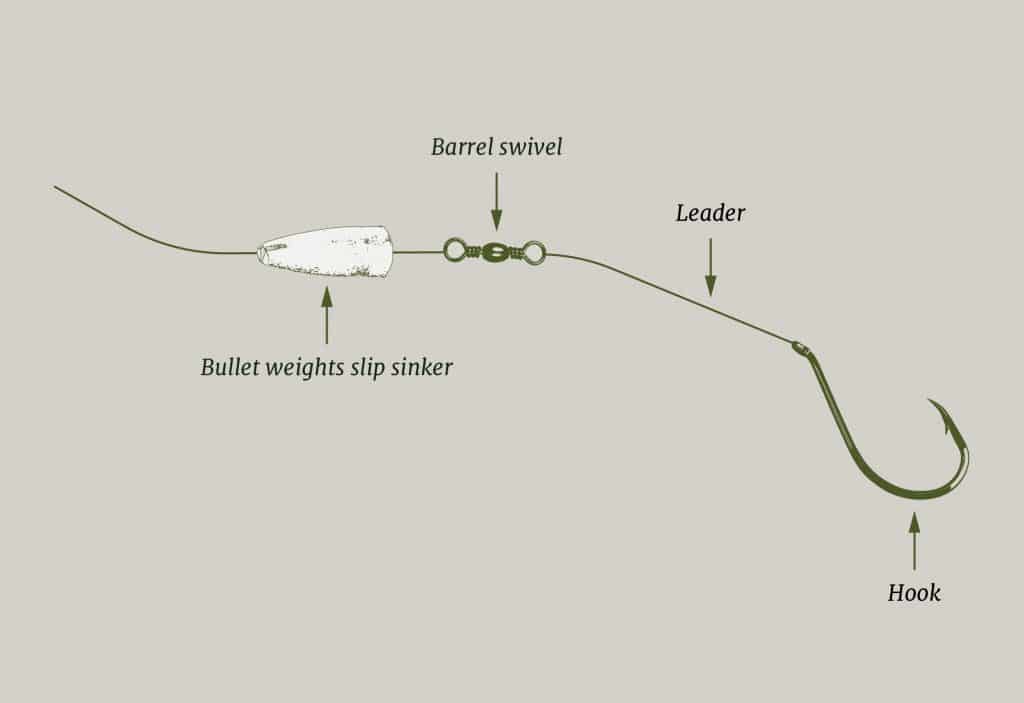
A slip-sinker fishing rig is a setup that has multiple parts. It works best sitting on the bottom of a river, lake, or other body of water.
A typical example includes a fishing line, a swivel, a leader, a lead weight, a hook, and bait.
However, depending on the purpose of your fishing rig, you may choose to add or remove certain parts.
At certain times of the year, bass and catfish are bottom-feeding fish that patrol lakes and riverbeds looking for injured or live prey.
A slip sinker rig’s purpose is to mimic the natural movement of dying shad as realistically as possible to attract catfish or other hungry fish.
The unique feature of a slip sinker rig is its barrel swivel and weight. The egg sinkers or bullet weights used in the setup allow the fishing line to hover horizontally or parallel to the lake bottom.
With the help of the swivel, the leader line extends outward and drifts in a lifelike way without tangling. That way, if a catfish grabs and runs with the bait, it feels realistic and offers no resistance.
The lack of resistance makes the fish bite down securely on the hook, allowing the angler to set the hook and reel it in.
A slip sinker rig is just what a fisherman needs to outsmart their catch by simulating a realistic feeding scenario.
A slip sinker rig may also be called a Carolina rig (by bass anglers) or a sliding sinker rig. However, most catfish anglers call it a slip sinker.
What Do You Need for a Slip Sinker Rig?
Slip sinkers are one of the best catfish rigs because they leave plenty of room for customizability, but let’s break down the gear needed to make a slip sinker rig.
You’ll need a main line, a weight, a swivel, a leader, a hook, and bait.
Main Line
The main line is the regular fishing line on your fishing rod. I prefer to use 30-50 pound braided line or fluorocarbon, but monofilament will work.
Be sure to account for the strength and aggression of freshwater catfish.
Weight
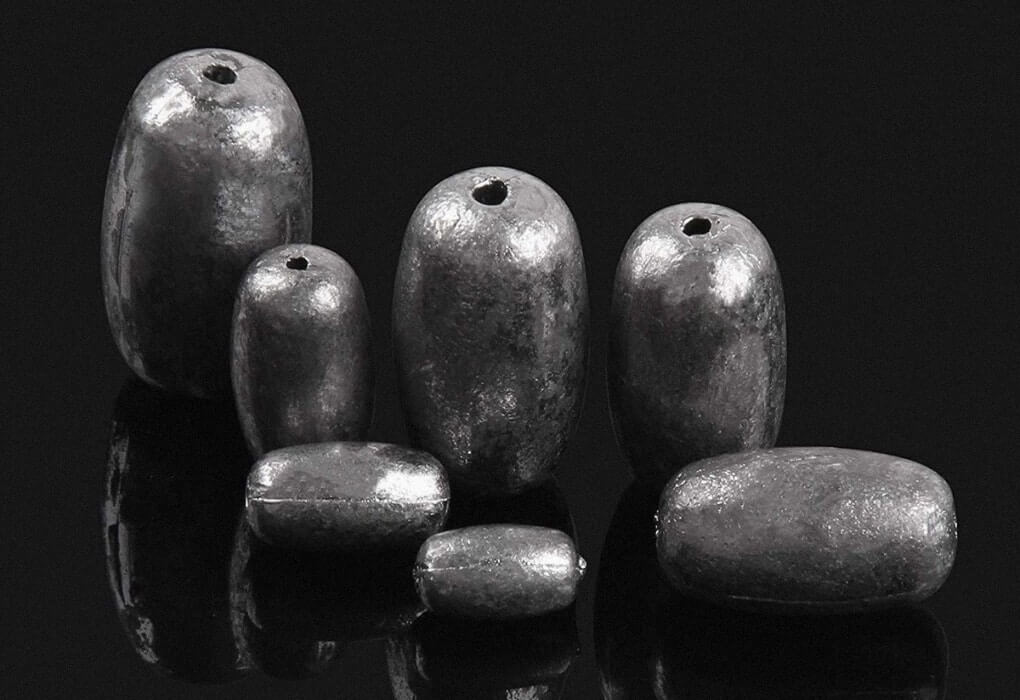
The most common types of weights are egg sinkers and bullet weights. Regardless of which type you prefer, they all fulfill the same function of weighing down the fishing line to bring the bait near the lake bed or riverbed.
The weight of the sinker you use impacts how you fish using the rig. With a lighter weight, your line has more freedom to move in underwater currents or respond to surrounding creatures.
However, a lightweight sinker might drift from where you originally cast your line.
On the other hand, a heavier weight will keep your bait very close to where you cast. As a catfish angler, consider using a heavy sinker to monitor your situation better.
The general rule of thumb is to use a lighter weight in calm or shallow water and a heavier weight in moving or deeper water.
Swivel
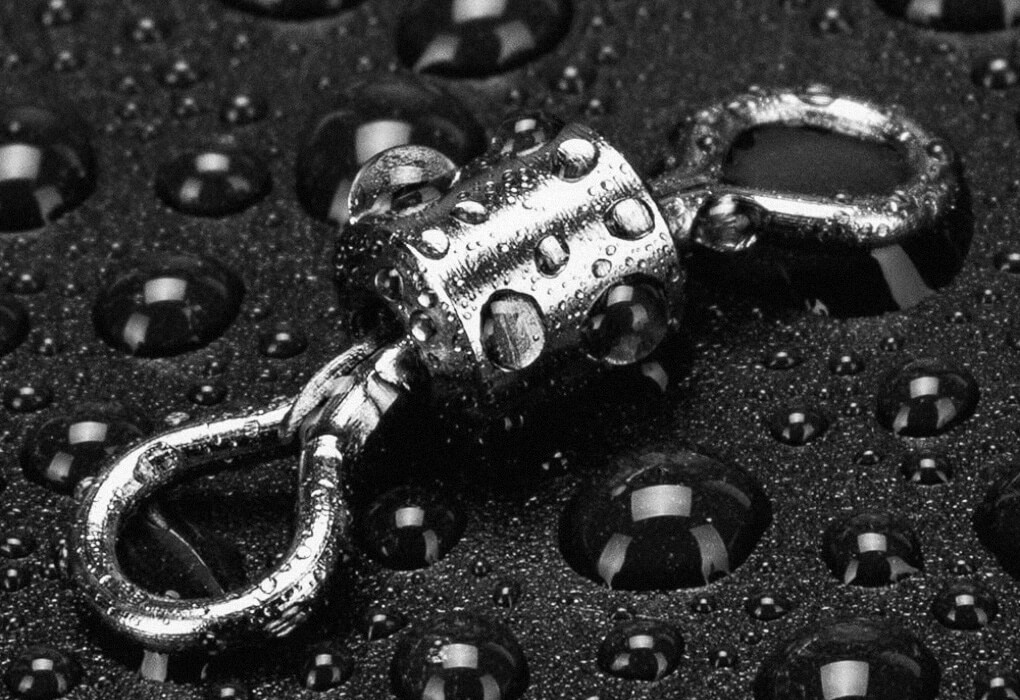
Barrel swivels are the most common type used in slip sinker rigs. Swivels let the fishing line move independently.
As a result, the leader can twist without twisting the main line, so you can spend more time fishing and less time re-spooling your reel because of line twist.
Leader
The leader line is the shining star of the rig. Thanks to the swivel, the leader can move freely near the bottom.
Furthermore, it lets the catch run with the prey without immediately feeling the resistance of the weight, which keeps the fish from spitting your hook.
Finally, the leader’s movements can even make cut bait seem alive, alluring even the pickiest fish to bite.
Hook
The type of hook is up to you. For catfish, I recommend either circle hooks, octopus hooks, or treble hooks. These options secure the fish well.
Circle hooks and octopus hooks are the best options because they’re less likely to get snagged.
Bait
Lastly, you can’t have a rig without bait. Live bait like shad, bluegill, minnows, leeches, or nightcrawlers work well with a slip-sinker catfish rig.
Cut bait is another excellent option for catching catfish. Try chicken livers or cut carp as catfish bait to avoid the hassle of live critters.
When bass fishing, use soft plastic lures, such as worms or salamanders.
How To Tie a Slip Sinker Rig
It isn’t complicated to tie a catfish slip sinker rig. First, feed your main line through the weight or sinker.
At the end of the main, attach a swivel. From there, tie on your leader, however long you’d like; I typically use a 1-2 foot leader. At the end of your leader is where your bait and hook belong.
Some catfish anglers include a bead between the weight and the swivel to protect the knot.
Let’s talk about fishing knots for a moment. Catfish and bass are strong fish that require tough knots.
To ensure your slip sinker rig lands your fish, I recommend using the following:
- a Trilene knot for attaching the barrel swivel to the leader
- a Snell knot for attaching the hook to your leader
Trilene Knot
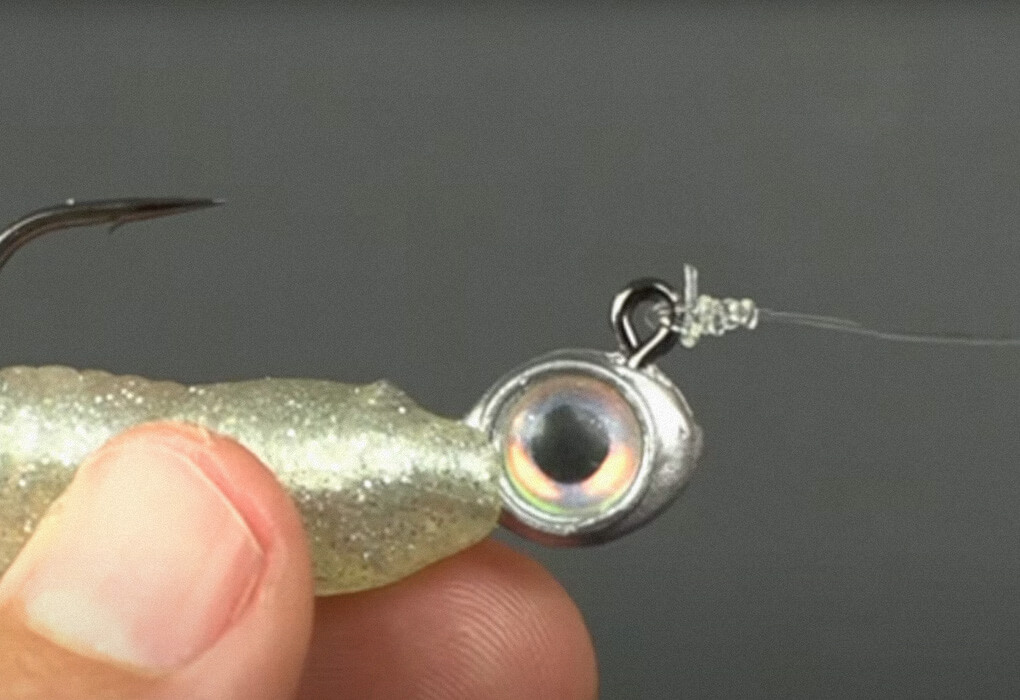
Trilene knots are an advanced technique, but they’re necessary to make the leader line move naturally.
To tie one around your swivel, you’ll need to run the leader through, around, and back in again, making a loose loop shape.
Then, tie the end around a section of the leader about an inch or two away from the swivel. Wet it, and then pull it tight and cut off the excess.
The result is a knot with some wiggle room tied firmly farther up the leader.
Snell Knot
Snell knots are a reliable technique in freshwater, saltwater, a boat, kayak, and shore fishing. Create a small knot at the end of your line and feed it through the eye of your hook.
Then, wrap the line around the hook’s neck eight or nine times from top to bottom, tying over the leader’s end. Then, pull the back of the line through the eye and pull it tightly.
Once you’ve secured your slip sinker rig, all you have to do is bait and cast your line.
Fishing a Slip Sinker Rig
The purpose of a slip sinker rig is to simulate live bait moving across the bottom of the water. As the angler, you want to fish while maintaining this illusion as fish move in and out of the area.
There are three main approaches to fishing slip sinker rigs. The first is to fish like a Carolina rig. After casting your rod, pull on it lightly in a slow sweeping motion.
When you feel resistance, wait until you’re sure the fish is running with the bait before setting the hook and reeling it in.
A much simpler way to use the rig is to find an underwater current, especially when river fishing, cast it out, and let it sit on the bottom.
You’ll feel a thump when the fish takes the bait, let it run with it for a little bit, and then set the hook and reel in your catch.
The last way to fish a slip-sinker rig is to troll. Trolling is simply dragging the rod behind you from a boat or kayak at a slow, steady pace, typically 1-2 miles per hour.
No matter which method you choose, keep a firm grip on your rod, especially if you’re fishing for catfish or bass. If you underestimate their strength, they can pull the rod into the water, making it difficult to recover.
Final Thoughts
Now you know a slip sinker rig’s parts, function, and procedure. One of the best fishing tips I can pass along is to be patient and experiment with what works for you and what doesn’t.
I’m confident that if you apply the slip sinker rig properly, you’ll see a noticeable increase in your fishing ability.
As always, it’s a matter of thinking like a fish and being patient.
I’d love to know your favorite catfish and bass fishing rigs in the comments!

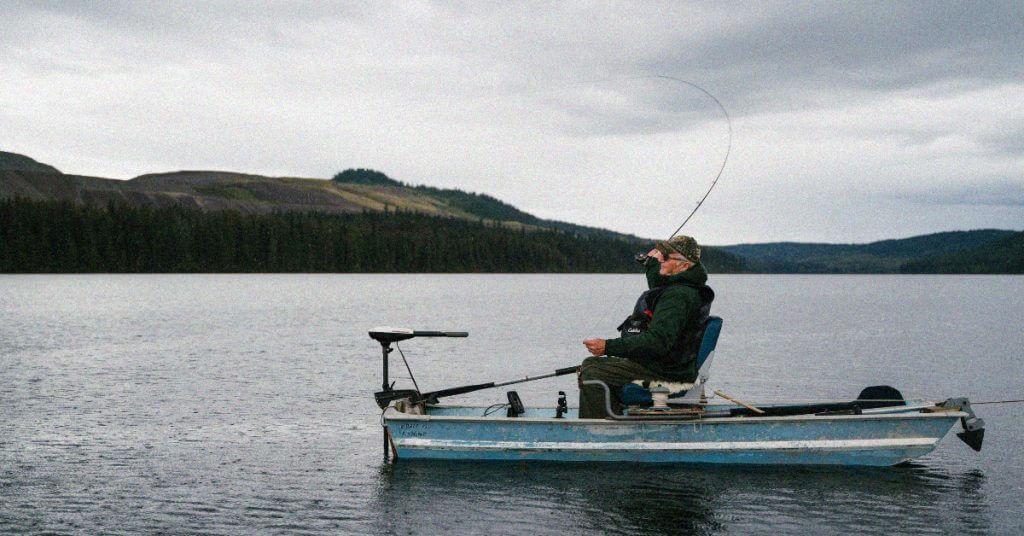
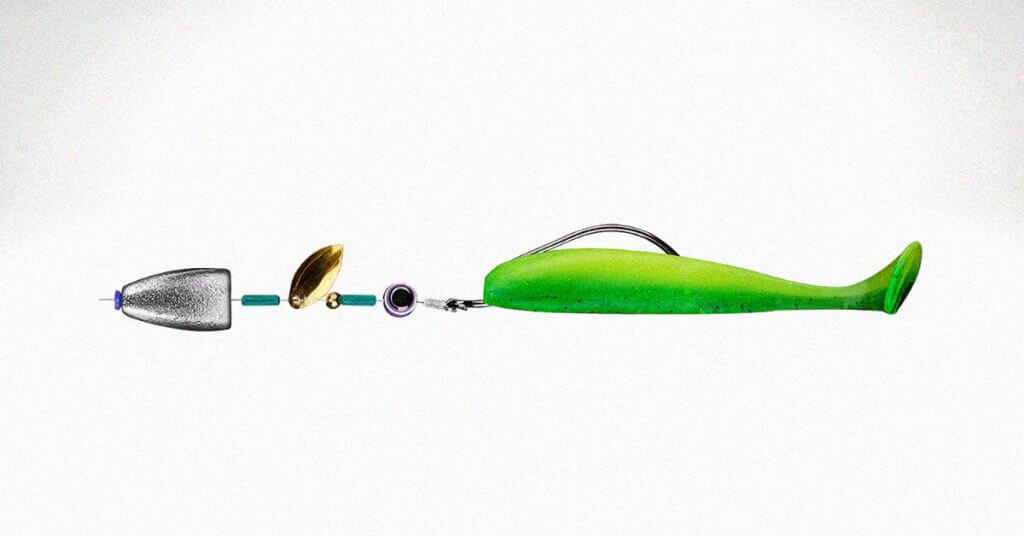
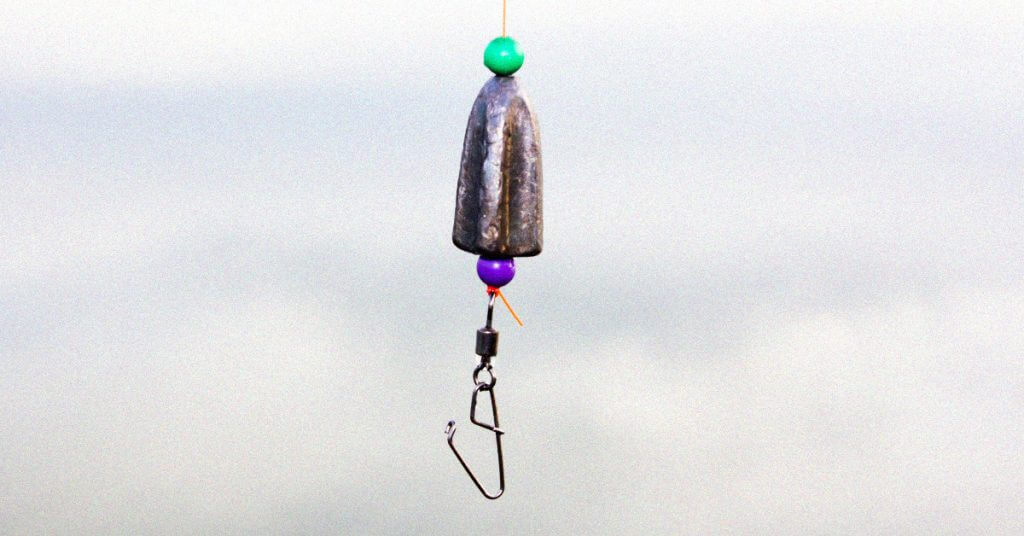
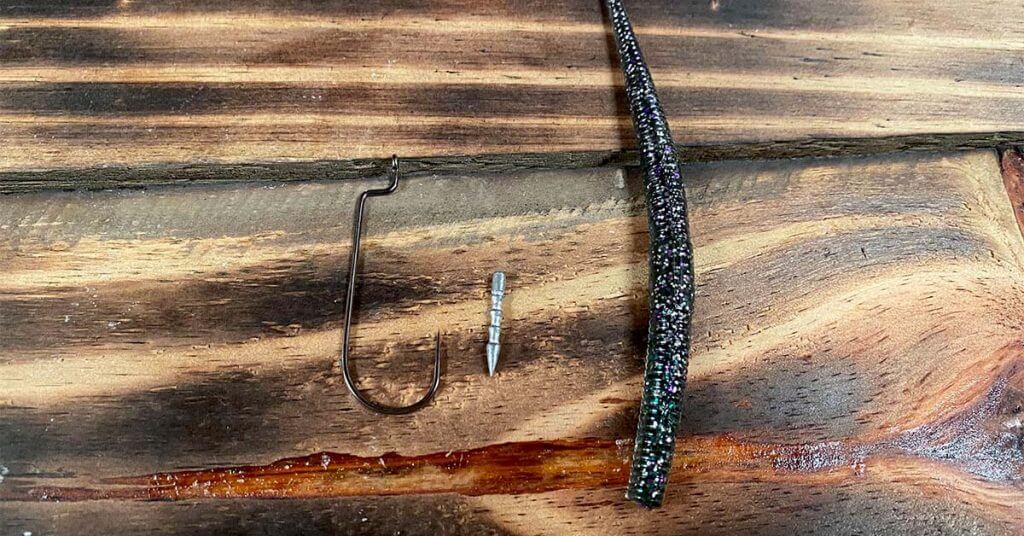
I started with this rig, my dad taught me, and now at 73 will probably end with it.
I think fish schools only teach the new fancy rigs. That is why the old standbys still work so well
I’d have to agree, Bill! I find myself chasing the new fancy lures and rigs only to come back to the “old school” rigs. Thanks for reading!